
Impacts of climate, N and P deposition and land use on water as a driver of the greenhouse gases regulatory ecosystem service in headwater catchments
Catchments provide a vital ecosystem service by regulating atmospheric CO2 globally, a process strongly influenced by water, and therefore closely related to the provisioning of water service. Climate, atmospheric deposition, and land use affect the quantity and quality of water. This project aims to enhance our understanding of the role of water in headwater catchments' functioning regarding the regulation of atmospheric CO2, as well as other climate-relevant gases (CH4, N2O, BVOC). The project aims to assess the social and economic value of these ecosystem services to inform policy and decision-making.

Cyanobacterial blooms in high mountain lakes: composition, causes and consequences
High-mountain lakes represent exceptional ecosystems for monitoring global change. Despite the absence of obvious signs of eutrophication, an increase in littoral algae has been observed in mountain lakes worldwide. In the Pyrenees, a rise in the proportion of cyanobacteria in the biofilms along lake shores has been detected, although their impact on the lakes of the National Parks Network in mountain areas is not yet fully understood.
This project aims to determine whether cyanobacterial proliferation is a common phenomenon in these lakes, identify their composition, and examine the environmental factors that may influence their development. To this end, the composition of cyanobacterial communities will be compared using 16S rRNA gene sequencing in samples collected in 2011 and in the present day across more than a hundred lakes in the network.

Exploring invisible biodiversity in Pyrenean lakes, sentinels of climate change, through high-resolution portable genomics
The PyriSentinel project, focused on the Pyrenees, studies high-mountain lake microorganisms using advanced DNA sequencing techniques. This region, experiencing warming above the global average, serves as a key observatory for assessing the impacts of global change.
Approximately 300 lakes will be examined, as their geographical isolation, extreme conditions, and climatic variations harbor remarkable microbial diversity. Characterizing planktonic communities is essential for understanding ecosystem productivity, as they play a crucial role in nutrient cycling, water purification, and interactions with macroorganisms, both at the trophic level and in their pathogenic potential.

The waterscape as a framework for species coexistence: diatoms as model
The waterscape is defined as the spatially and temporally dynamic water present on and within the uppermost layer of the Earth, which serves as the interface between the lithosphere, atmosphere, hydrosphere, and biosphere—known as the critical zone. The WATERSCAPE project aims to elucidate how waterscapes contribute to the coexistence of aquatic species.
Diatoms will serve as our model organisms, and the high-mountain waterscape—where theoretical expectations can be empirically tested—will be our model system. Specifically, we aim to demonstrate that the spatial and temporal variability of waterscapes facilitates diatom species coexistence by either equalizing relative fitness or promoting niche differentiation. The project will integrate field observations, field experiments, and laboratory experiments to characterize the growth responses of a large number of diatom species (hundreds) to environmental gradients. Ultimately, this approach will allow us to fit parameters of coexistence theory and investigate the role of different spatial and temporal environmental fluctuations in shaping species distribution patterns across the high-mountain waterscape
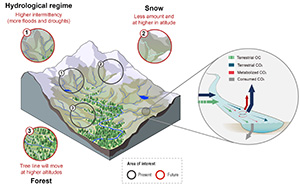
Perturbations of the carbon cycle in high-mountain watersheds under a more intermittent hydrology
On average, climate change (CC) is affecting high mountain ecosystems more severely than in the rest of the world, causing recurrent hydrological disturbances. However, due to their inaccessibility, current models of the carbon cycle (C) rarely incorporate the role of hydrology and biogeochemistry (or their interaction) in high mountain basins. This limitation makes it difficult to gain a thorough understanding of how these basins work and therefore our ability to anticipate how a more intermittent future will change their roles in the wider C cycle. CARBINTER's general objective is to understand how hydrological intermittence affects the transport and reactivity of C through the landscape continuum (from the soils to the rivers downstream) to the high mountain basins.
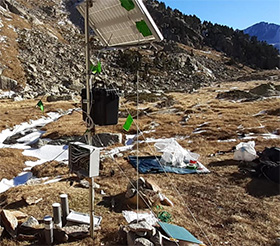
Impact of climate-enhanced hydrological intermittency on the carbon cycle of high-mountain watersheds
High-mountains are the “water towers” of the world, supplying a substantial part of water demands for downstream ecosystems and society. Climate Change is hitting them more severely than the world on average leading to most dramatic hydrological alterations. The expectable higher frequency of extreme climatic events will lead to a higher hydrological intermittency, in the sense of a change to a regime characterized by an alternance of extreme situations (droughts-floods). Yet biogeochemistry and ecosystem science have failed to appreciate the role of their headwaters as regulators of carbon transfers from land to the atmosphere and sea. This limitation hinders a deep understanding of how they function and thus our ability to anticipate how a more intermittent future will modify their roles in the broader C cycle. This project's primary goal is to develop a new framework (integrating terrestrial and aquatic as well as gradual and intermittent transitions) for understanding C transport dynamics in high-mountain headwaters and, in doing so, generate new insights on their significance to the broader landscape and regional C cycle. To achieve this, we will set-up a next-generation network of monitoring stations equipped with multiple-parametric sensors to simultaneously gather land and stream hydrologic and biogeochemical data
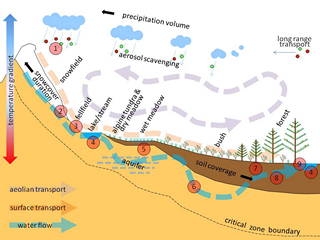
The pH-alkalinity gradient in space and time, an ecological framework for freshwater biodiversity
The overall aim of this project is to elucidate the biogeochemical processes that control the pH-alkalinity variation at fine scales in mountain aquatic sistems (e.g. microhabitats, interannual and decadal tendencies and fluctuations, changes across vegetation gradients), providing the reference to characterize the fluctuations that local diatoms communities may experience. This work is focused to address our general hypothesis that local diatom communities are responding to direct and catchment-mediated effects of the current atmospheric CO2 increase, by providing insight into the small scale mechanisms of alkalinity generation. Our specific working hypothesis in this subproject is that the aggregation of such fine scale mechanisms gives rise to mesoscale patterns/gradients of alkalinity (both in space and time), that are the ecological framework in which local communities evolve. The conceptual basis for this analysis is the Landscape Continuum Model (LCM) applied to high mountain catchments.

The acceleration of biogeochemical cycles in high mountain areas during the Anthropocene
The increase in atmospheric carbon dioxide, the greater deposition of assimilable nitrogen and phosphorus compounds, and warming that extends the vegetative period in cold regions suggest an acceleration of biogeochemical processes in remote cold areas not directly affected by human activity. The alpine zones of high mountains are likely among them. However, current monitoring lacks sufficient temporal perspective, as these changes likely began around the mid-20th century.
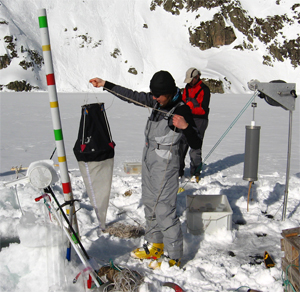 Keys to understand the transfer of the atmospheric forcing to the dynamics of lacustrine plankton
Keys to understand the transfer of the atmospheric forcing to the dynamics of lacustrine plankton
The footprint of global change shows up in multiple indicators. As evidence accumulates, some paradoxes also emerge. At multiannual time scales, one intriguing aspect is why some ecosystems seem to follow more closely indicators of general atmospheric dynamics (e.g., CO2 increase, hemispheric mean annual temperature) than the local weather and deposition records. Pathways of mechanistic causality must exist that explain the apparent paradox. Probably, they are related to processes of a different characteristic reaction and renewal times. One of the systems in which the phenomenon has been observed is the plankton of remote lakes. The TRANSFER project aims to address this issue and provide an integrated view of the transfer of atmospheric fluctuations to the planktonic system of lakes in remote areas to understand the apparent paradoxes.
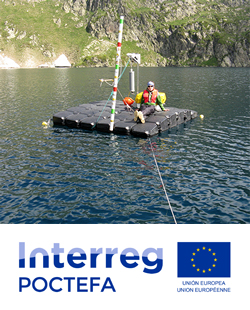
A network of observatories of ecosystems (lakes and peatbogs) sensitive to the climate change in the Pyrenees
REPLIM is a network of scientific centers and managers specialised in the dynamics of high mountain lakes and peatbogs and their relationship with Climate Change (CC). Pyrenean lakes and peatbogs are iconic elements of our landscape, and sensitive to recent climate change. REPLIM will implement a Pyrenean network of observatories of lakes and peatbogs designed to undertake the challenge of evaluating the CC impact on the high altitude areas and to provide robust scientific data to develop policies of mitigation and adaptation.
 |
The lake district concept in the ecological understanding of high mountains
Sets of lakes in the landscape are known as lake districts. The objective of this project is to demonstrate that the lake district acts as a regional functional ecological unit. The hypothesis is that ecological properties, beyond the simple addition of smaller units (lakes), emerge from the densification of lakes in a region. They could result among others from topographical restrictions, border effects, directional environmental gradients, stochastic colonizing patterns, concatenation of dominant biogeochemical processes.
 Study of the effects of nitrogen deposition increase on the lakes of the Pyrenees
Study of the effects of nitrogen deposition increase on the lakes of the Pyrenees
The acceleration of industrialization since 1950s resulted in a progressive increase of nitrogen forms that can easily be easily assimilated by living organisms (e.g. NH4+: NO3-). Currently reactive nitrogen has duplicated natural levels existing just less than a century ago in our planet. As some compounds are easily volatile, reactive nitrogen has spread beyond human activity areas and, in greater or smaller degree, is affecting relatively remote zones through increase of ammonium and nitrate in the deposition.
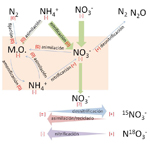 Pilot study for the use of stable and radioactive isotopes in monitoring and long term ecological research (LTER) in the aquatic ecosystems of the National Parks
Pilot study for the use of stable and radioactive isotopes in monitoring and long term ecological research (LTER) in the aquatic ecosystems of the National Parks
In this project, we aim to implement a protocol for the use of the measurement of natural levels of several stable and radiactive isotopes with a view to monitor the biogeochemistry of surface waters as indicators of the ecological functioning of high mountain catchments. These new techniques would be included in the monitoring programme running since 2004 in the Aigüestortes National Park. The objectives are: 1) to design and test in a pilot study a monitoring protocol including isotopes; 2) to determine the isotopic composition, its range and mode of variation, for a suite of compounds that are substrates of several environmental processes of interest and are thus relevant to the interpretation of the isotopic composition of the products resulting from these processes; 3) to identify which processes have a greater weight on the ecological and biogeochemical functioning of the catchment, and therefore warrant more attention in a long term monitoring; and 4) to propose an optimized design based on the results of the project.
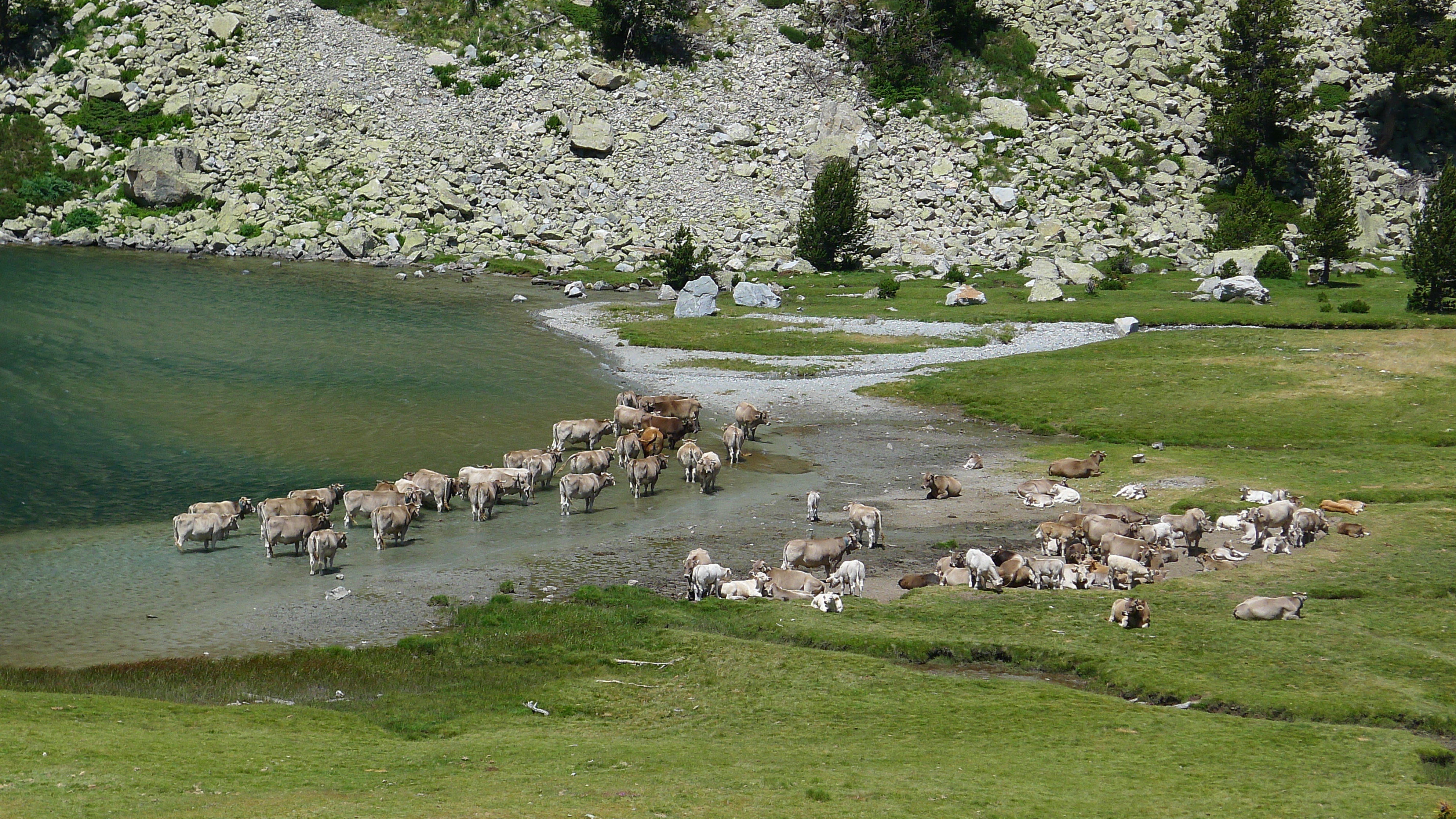 Livestock effects on the lakes of Aigüestortes and Sant Maurici Lake National Park: nitrogen inputs and eutrophication risk
Livestock effects on the lakes of Aigüestortes and Sant Maurici Lake National Park: nitrogen inputs and eutrophication risk
High mountain landscapes do not escape the effects of the increased nitrogen atmospheric deposition caused by human activities during the last few decades. In addition to this, livestock grazing on high mountain natural pastures during the summer might modify the quantity and composition of nutrient load entering lakes, thus affecting production rates in these ecosystems. The present proposal seeks to evaluate the effects of livestock on lakes in the Aigüestortes and Sant Maurici Lake National Park, and to assess the eutrophication risk posed by livestock as it interacts, perhaps synergistically, with increased nitrogen deposition rates. Our proposal suggests addressing these questions at three distinct spatial and temporal scales. At the scale of the lakescape, we propose to build statistical models linking livestock pressure, atmospheric deposition, and lake and catchment characteristics with in-lake nutrient concentrations and stoichiometry. At the lake and catchment scale during the entire ice-free season, we seek to analyse in greater detail the effects on the biomass, composition, and activity of plankton, including Archaea and Bacteria. Finally, at the individual lake scale, we propose to analyse the local effect of livestock on the composition and biomass of algal and macrophyte communities, and on microbial activity.
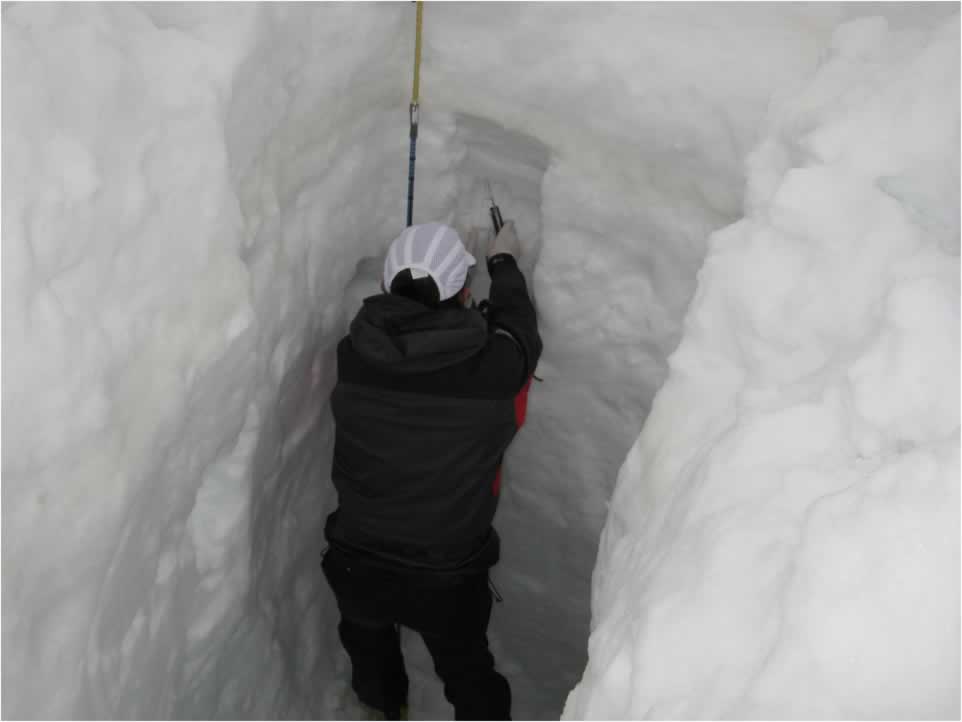 Coupling of the C and N hydrobiogeochemical cycles in high mountain catchments during intense hydrological episodes, estimation of its relative importance in the yearly mass balances and possible implications of climate change
Coupling of the C and N hydrobiogeochemical cycles in high mountain catchments during intense hydrological episodes, estimation of its relative importance in the yearly mass balances and possible implications of climate change
In this project, we aim to study the processes affecting the biogeochemistry of carbon and nitrogen, as they are reflected in the changes produced in the chemistry of the waters draining mountain catchments. This is a continuation of a previous project. The detailed objectives are: 1) To estimate the rates of CO2 sequestration in weathering reactions; 2) To establish the links between the cycles of C and N in the catchments; 3) To improve and adapt the distributed hydrological model TETIS to the features of high mountain catchments; and 4) To forecast the effects of climate change on the biogeochemistry of C and N in high mountain catchments. To undertake this, it is proposed to increase both the space and time resolution of the hydrobiogeochemical monitoring that is presently being carried out. This will allow us to identify the contribution of each hydrological compartment to the stream flow, to detail the spatial heterogenity of these compartments, and to assess the relevance of the abrupt hydrological events (floods anf thaw) in the leaching of solutes from the catchment to the rivers.
31 biodAT: Integración de las bases de datos sobre biodiversidad del nodo LTER-Aigüestortes en GBIF
Programme: Plan Nacional de Internacionalización - Euroinvestigación
Funding body: MICINN
Project reference: EUI2008-03863
Years: 2009 - 2010
Coordinator: L. Camarero
30 ECOFOS: El fósforo como factor de interdependencia entre biogeoquímica y dinámica de poblaciones en lagos alpinos a distintas escalas temporales.
ECOFOS: Phosphorus as a factor of interdependence between biogeochemistry and population dynamics in alpine lakes at different time scales
Programme: PNRN - Programa Nacional de Recursos Naturales
Funding body: Ministerio de Educación y Ciencia
Project reference: CGL2007-64177/BOS
Years: 2008 - 2010
Coordinator: J. Catalan
29 EcoSensor: Remote aquatic Ecosystems as Sensors of global change and models to define microbial biodiversity patterns: the role of atmospheric aerosols ()
Funding body: Fundación BBVA
Years: 2006 - 2008
Coordinator: I. Reche (UGR)
28 ALTER-Net - A Long-term Biodiversity, Ecosystem and Awareness Research Network.
(Three actions within a European Network of Excellence)
Programme: ENVI - Living, environment and climate. ENVIRONMENT
Funding body: EU - European Commission
Project reference: GOCE-CT-2003-505298
Action 1: Application of molecular and genetic techniques to evaluate and monitor the impact of environmental factors on the biodiversity, structure and function of planktonic communities in lakes.
Years: 2006 - 2007
Coordinator: L. Camarero
Action 2: Development of a pan-european standard method and data-adquisition protocols to evaluate trends in biodiversity in european lakes.
Years: 2006 - 2007
Coordinator: L. Carvalho (CEH)
Action 3: Changes in the biodiversity of lakes derived from the analysis of sediments and limnological monitoring - a selection of study cases in european lakes.
Years: 2006 - 2007
Coordinator: B. Valero (IPE-CSIC)
27 Trazadores múltipes para el estudio de la estructura y funcionamiento de redes tróficas acuáticas: desarrollo en sistemas lacustres
Multiple tracers for the study of the structure and functioning of aquatic food webs: development in lacustrine systems
Programme: PNRN - Programa Nacional de Recursos Naturales
Funding body:Ministerio de Educación y Ciencia.
Project reference: CGL2004-02989
Years: 2004 - 2007
Coordinator: J Catalan.
26 EURO-LIMPACS: Integrated Project to Evaluate the Impacts of Global Change on European Freshwater Ecosystems.
Programme: ENVI - Living, environment and climate. ENVIRONMENT
Funding body: EU - European Commission
Project reference: GOCE-CT-2003-505540
Years: 2004 - 2009
Coordinator: S. Patrick (UCL). National coordinator: J. Catalan
25 Estudio hidrológico y biogeoquímico de la red hídrica de la Vall de Sant Nicolau (P.N. Aigüestortes i E.S. Maurici): implicaciones sobre los ecosistemas lacustres y aplicación a la determinación de caudales ecológicos.
Hydrological and biogeochemical study of the hydrological network of the Sant Nicolau Valley (Aigüestortes i E.S. Maurici National Park): implications for the lacustrine ecosystems and application to the determination of ecological flows.
Funding body: Ministerio Medio Ambiente. Red de Parques Nacionales
Project reference: 044/2002
Years: 2003 - 2006
Coordinator: L. Camarero
24 Los lagos de montaña como sistemas de observación del cambio climático y sus efectos sobre áreas de interés natural
Mountain lakes as systems for the observation of climate change and its effects on areas of natural interest
Programme: PNRN - Programa Nacional de Recursos Naturales
Funding body: Comisión Interministerial de Ciencia y Tecnología (CICYT)
Project reference: REN2000-0889/GLO
Years: 2001 - 2004
Coordinator: J. Catalan
23 EMERGE: European mountain lake ecosystems: Regionalisation, diagnostic & socio-economic evaluation
Programme: ENVI - Living, environment and climate. ENVIRONMENT.
Funding body: EU - European Commission
Project reference: EVK1-CT-1999-00032
Years: 2000 - 2003
Coordinator: S. Patrick (UCL). National coordinator: J. Catalan
22 Estudi hidrobiogeoquímic de les conques d'alta muntanya i de piemont. Implicacions mediambientals
Hydrobiogeochemical study of high mountain and piedmont catchments. Environmental implications
Programme: XATE - Xarxes temàtiques - Thematic networks
Funding body: Comissió Interdepartamental de Recerca i Innovació
Tecnològica de la Generalitat de Catalunya (CIRIT)
Project reference: XTI99-7
Years: 2000 - 2001
Coordinator: J. Catalan
21 AQUACLOR: Estudi de la dinámica dels compostos organoclorats persistents en els sistemes aquàtics continentals
AQUACLOR: Study of the dynamics of persistent organo-chlorinated compounds in the inland aquatic systems
Programme: AJRE - Ajuts a la Recerca
Funding body: Comissió Interdepartamental de Recerca i Innovació Tecnològica de la Generalitat de Catalunya (CIRIT)
Participant institutions: DMAM - Departament de Medi Ambient de la Generalitat de Catalunya;
Years: 1999 - 2002
Coordinator: J. Grimalt (CID-CSIC)
20 Atenuación de la radiación ultravioleta y características ópticas de un lago de alta montaña (L.Redó): estudio del papel del fitoplancton
Attenuation of UV radiation and optical characteristics of a high mountain lake (L. Redó): study of the role of phytoplankton
Programme: ACIN - Acciones Integradas
Funding body: MEDU - Ministerio de Educación y Ciencia
Project reference: HU1998-0008
Years: 1999
Coordinators: J. Catalan (UB) & Roland Psenner (UIBK)
19 CHILL 10,000: Climate history as recorded by ecologically sensitive arctic and alpine lakes in europe during the last 10,000 years a multi proxy aproach.
Programme: ENVI - Living, environment and climate. ENVIRONMENT.
Funding body: EU - European Commission
Project reference: ENV4-CT97-0642
Years: 1998 - 2001
Coordinator: A. Korhola. National coordinator: J. Catalan
18 Atenuación de la radiación ultravioleta y características ópticas de un lago de alta montaña (L.Redó): estudio del papel del fitoplancton.
Programme: ACIN - Acciones Integradas
Funding body: MEDU - Ministerio de Educación y Ciencia
Project reference: HU1997-0027
Years: 1998 hasta:
Coordinator: Jordi Catalan
17 Biodiversidad de microorganismos en ecosistemas acuáticos
Biodiversity of microorganisms in aquatic systems (complementary funds)
Programme: SPGC - Programa Nacional de Promoción General del Conocimiento
Funding body: SEID - Secretaría de Estado de Educación, Universidades,
Investigación y Desarrollo
Project reference: UE97-0007
Years: 1997 - 1998
Coordinator: J.L. Pretus (UB)
16 Medición y modelado de la respuesta dinámica de ecosistemas lacustres de alta montaña al cambio ambiental (MOLAR)
Measuring and modelling the dynamic response of remote mountain lake ecosystems to environmental change (MOLAR - complementary funds)
Programme: SPGC - Programa Nacional de Promoción General del Conocimiento
Funding body: SEID - Secretaría de Estado de Educación, Universidades, Investigación y Desarrollo
Project reference: UE97-0011
Years: 1997 - 1998
Coordinator: J. Catalan
15 Biodiversity of microorganisms in aquatic systems
Programme: ENVI - Living, environment and climate. ENVIRONMENT.
Funding body: EU - European Commission
Project reference: ENV4-CT95-0006
Years: 1996 hasta: 1999
Coordinator: S. Neunlist. National coordinador: J.L. Pretus (UB)
14 MOLAR: Measuring and modelling the dynamic response of remote mountain lake ecosystems to environmental change (MOLAR)
Programme: ENVI - Living, environment and climate. ENVIRONMENT.
Funding body: EU - European Commission
Project reference: ENV4-CT95-0007
Years: 1996 - 1999
Coordinator: S. Patrick (UCL). National coordinator: J. Catalan
13 Development of assessment and monitoring techniques at integrated monitoring sites in Europe
Programme: LIFE - Financial instrument for the environment. LIFE.
Funding body: EU - European Commission
Years: 1996 - 1997
Coordinator: M. Forsius (SYKE). National coordinator J. Catalan
12 Respuesta de la comunidad microbiana al estrés de la radiación ultravioleta-B en las aguas europeas
Response of the microbial community to the UVB radiation stress in the European waters
Programme: SPGC - Programa Nacional de Promoción General del Conocimiento
Funding body: SEUI - Secretaría de Estado de Universidades e Investigación
Project reference: UE96-0008
Years: 1996 - 1997
Coordinator: J. Catalan
11 Efecto de la radiación ultravioleta sobre las comunidades microbianas planctónicas - II
Effects of the UV radiation on the planktonic microbial communities - II
Programme: ACIN - Acciones Integradas
Funding body: MEDU - Ministerio de Educación y Ciencia
Project reference: HU1995-0025
Years: 1996
Coordinators: J. Catalan (UB) & Roland Psenner (UIBK)
10 MICOR: Microbial community response to ultraviolet-B stress in European waters
Programme: ENVI - Living, environment and climate. ENVIRONMENT.
Funding body: EU - European Commission
Project reference: EV5V-CT94-0512
Years: 1994 - 1996
Coordinator: J. Catalan
9 Efecto de la radiación ultravioleta sobre las comunidades microbianas plantónicas - I
Effects of the UV radiation on the planktonic microbial communities - I
Programme: ACIN - Acciones Integradas
Funding body: MEDU - Ministerio de Educación y Ciencia
Years: 1994
Coordinators: J. Catalan (UB) & Roland Psenner (UIBK)
8 Estudio biogeoquímico, ecológico y paleolimnológico de los sedimentos de los lagos de los Pirineos.
Biogeochemical, ecological and paleolimnological study of the sediments of the Pyrenean lakes.
Programme: NMAR - Programa Nacional de Medio Ambiente y Recursos Naturales
Funding body: Comisión Interministerial de Ciencia y Tecnología
(CICYT)
Project reference: AMB93-0814-C02-01
Years: 1993 hasta: 1996
Coordinator: J. Catalan
7 ALPE2: Acidification of Mountain Lakes: Palaeolimnology and Ecology. Remote Mountain Lakes as Indicators of Air Pollution and Climate Change
Programme: AYIN - Ayudas a la Investigación
Funding body: EU - European Commission
Project reference: EV5V-CT92-0205
Years: 1993-1996
Coordinator: S. Patrick (UCL). National coordinator: J. Catalan
6 Aplicación de nuevas técnicas para el estudio de la microestructura física y biológica de los lagos y embalses
Aplication of novel techniques for the study of the physical and biological microstructure of lakes and reservoirs
Programme: ACIN - Acciones Integradas
Funding body: MEDU - Ministerio de Educación y Ciencia
Years: 1993
Coordinators: J. Catalan (UB) & Roland Psenner (UIBK)
5 Susceptibilidad de los lagos de montaña a la acidificación: Alpes y Pirineos
Susceptibility of mountain lakes to acidification: Alps and Pyrenees
Programme: ACIN - Acciones Integradas
Funding body: MEDU - Ministerio de Educación y Ciencia
Years: 1992
Coordinators: J. Catalan (UB) & Roland Psenner (UIBK)
4 Models i técniques d’estudio del sistema físic d’estanys i embassaments
Modelling and techniques of study of the physical system of lakes and reservoirs
Programme: AJRE - Ajuts a la Recerca
Funding body: Comissió Interdepartamental de Recerca i Innovació
Tecnològica de la Generalitat de Catalunya (CIRIT)
Years: 1991-1991
Coordinator: J. Catalan
3 Estudio del flujo de carbono, reciclado de nutrientes y producción primaria en un lago ultraoligotrófico poco influenciado por el hombre (Estany Redó - Pirineos)
Study of the carbon flux, nutrient recycling and primary production in an ultraoligitrophic lake with little human influence (Lake Redó - Pyrenees)
Programme: PNDA - Programa Nacional de Conservación del Patrimonio Natural y
Procesos de Degradación Ambiental
Funding body: Comisión Interministerial de Ciencia y Tecnología (CICYT)
Project reference: NAT89-0943
Years: 1990 - 1993
Coordinator: J. Catalan
2 Comportamiento fotosintético del fitoplancton bajo el hielo en un lago de alta montaña (Estany Redó, Pirineos Centrales)
Photosynthetic behavior of phytoplankton under the ice in a high mountain lake (Lake Redó, Central Pyrenees)
Funding body: Caixa d’Estalvis i Mont de Pietat de Barcelona, Fundació “La Caixa”
Years: 1988 - 1989
Coordinator: L. Camarero
1 Evaluación del riesgo de eutrofización y acidificación de los lagos del Pirineo
Assessment of the risk of eutrophication and acidification of the Pyrenean lakes
Funding body: Caixa d’Estalvis i Mont de Pietat de Barcelona, Fundació “La Caixa”
Years: 1987 - 1989
Coordinator: J. Catalan
